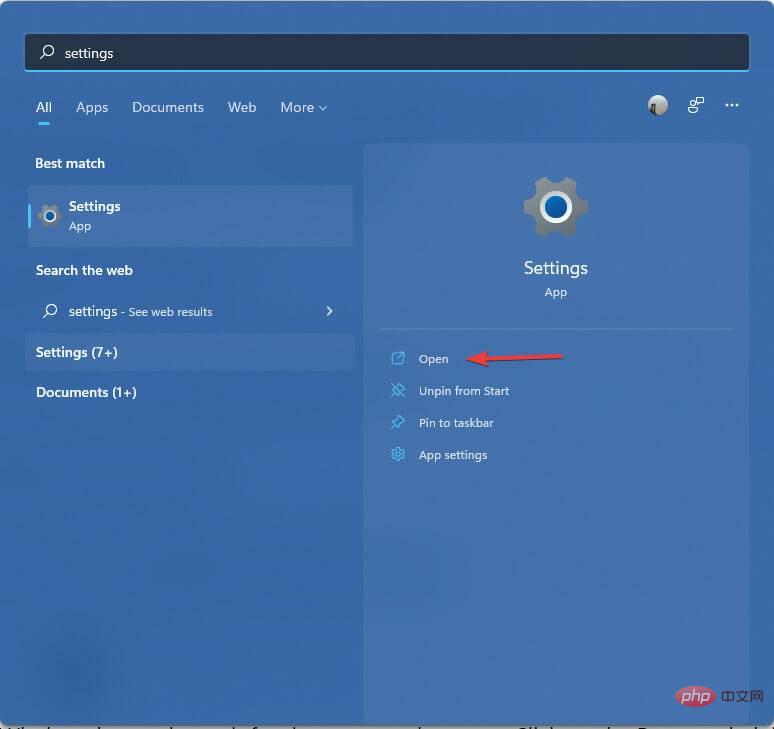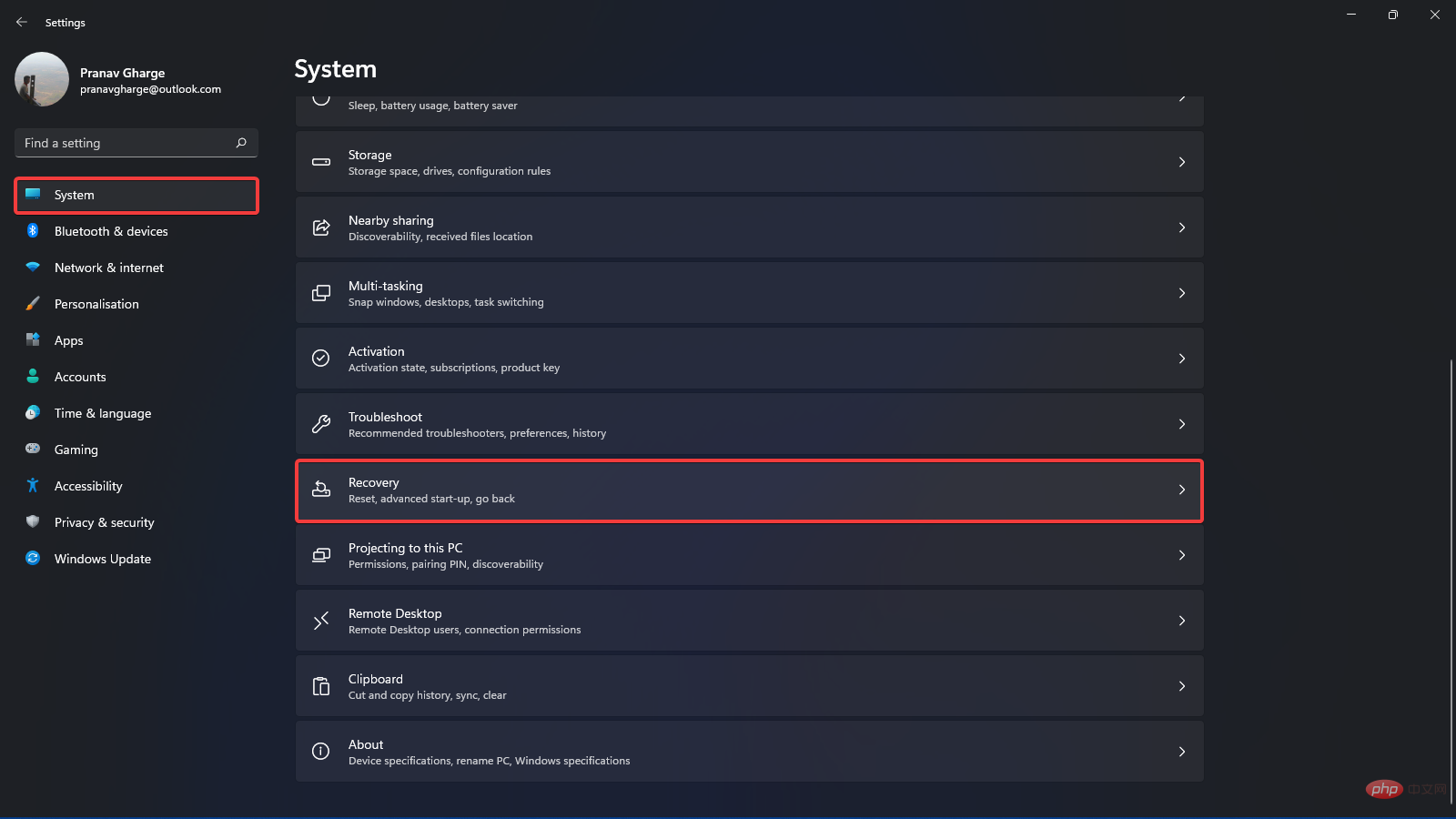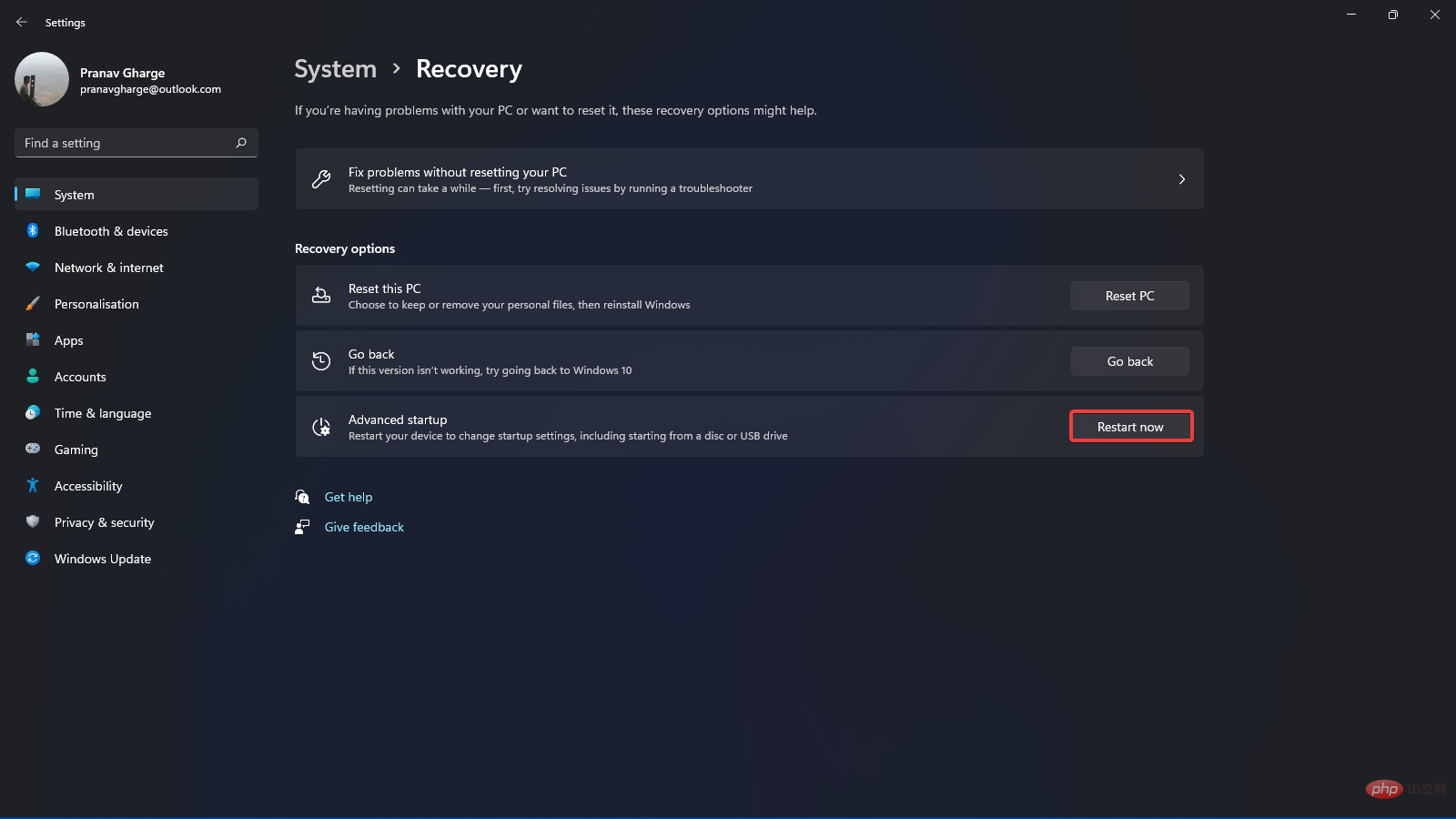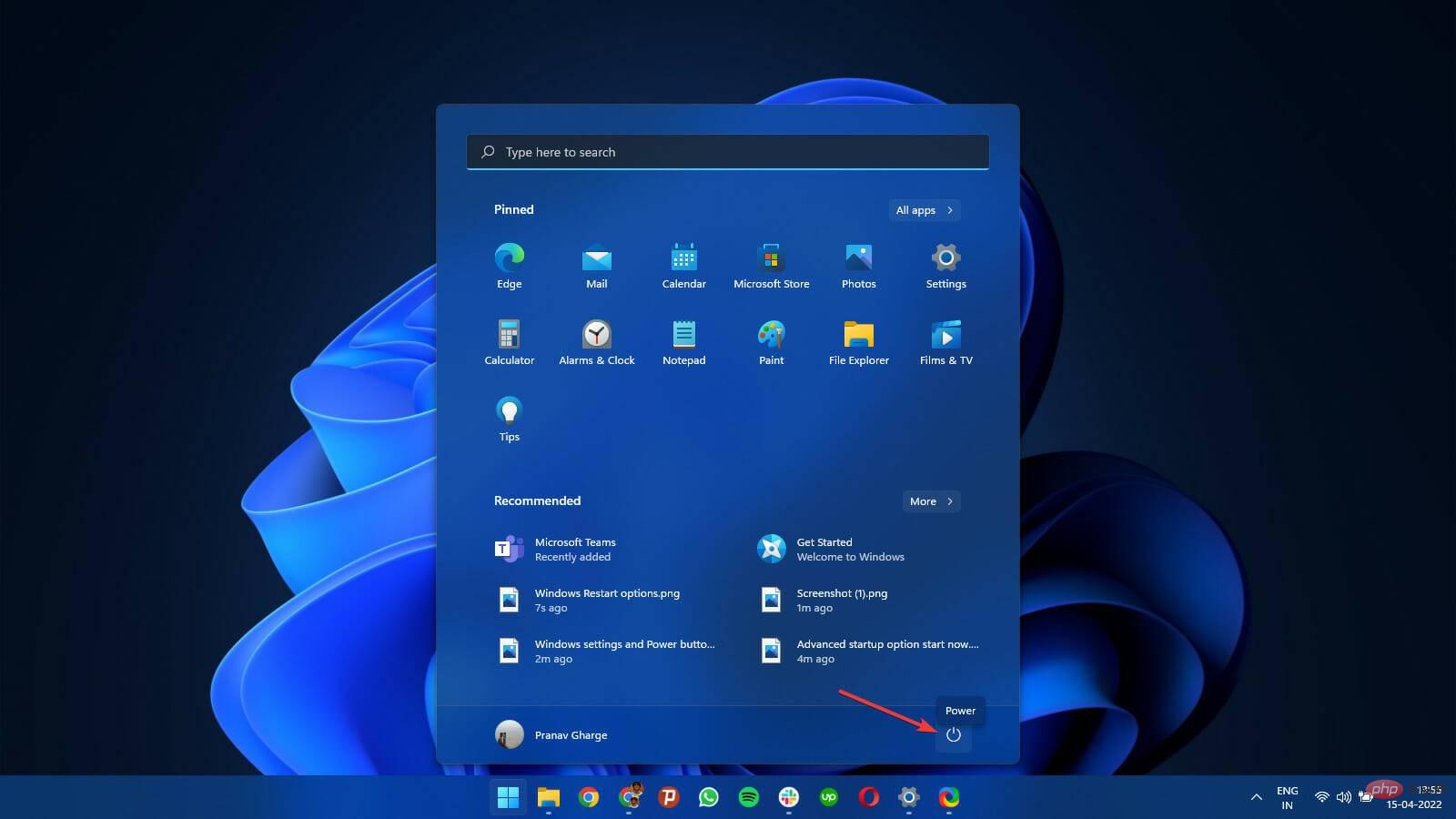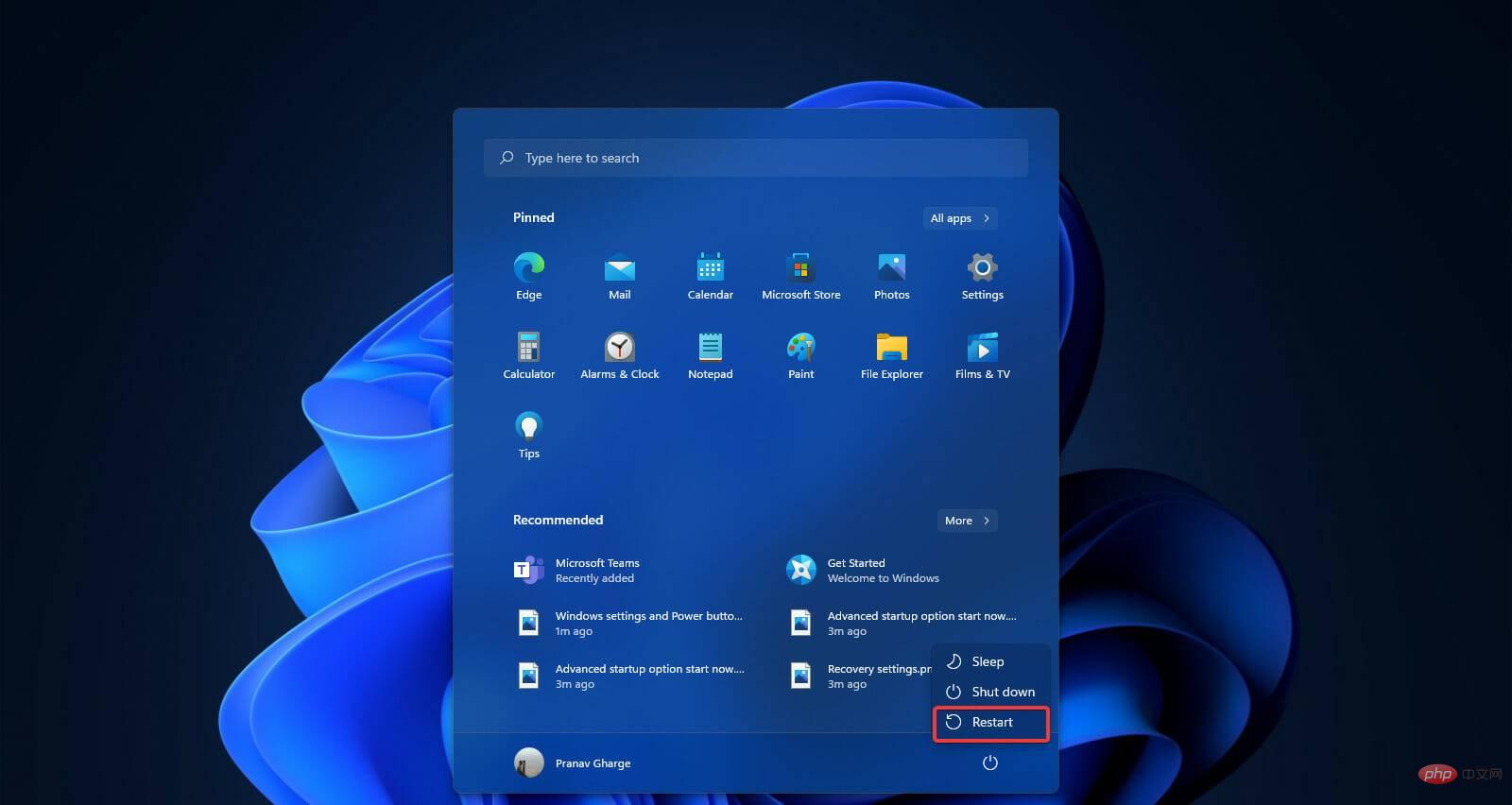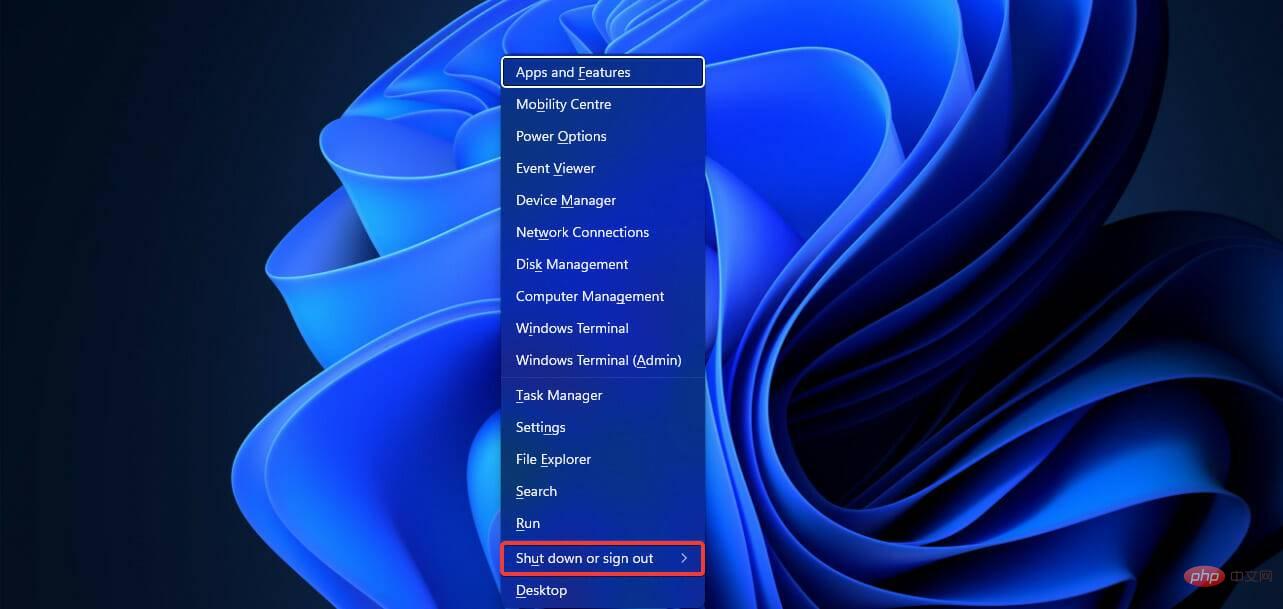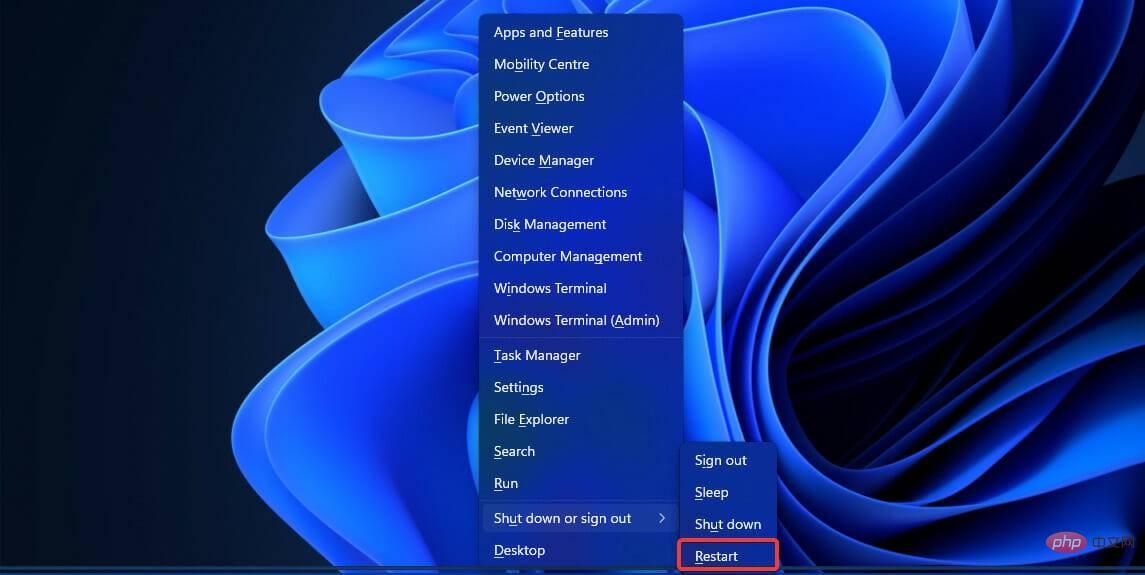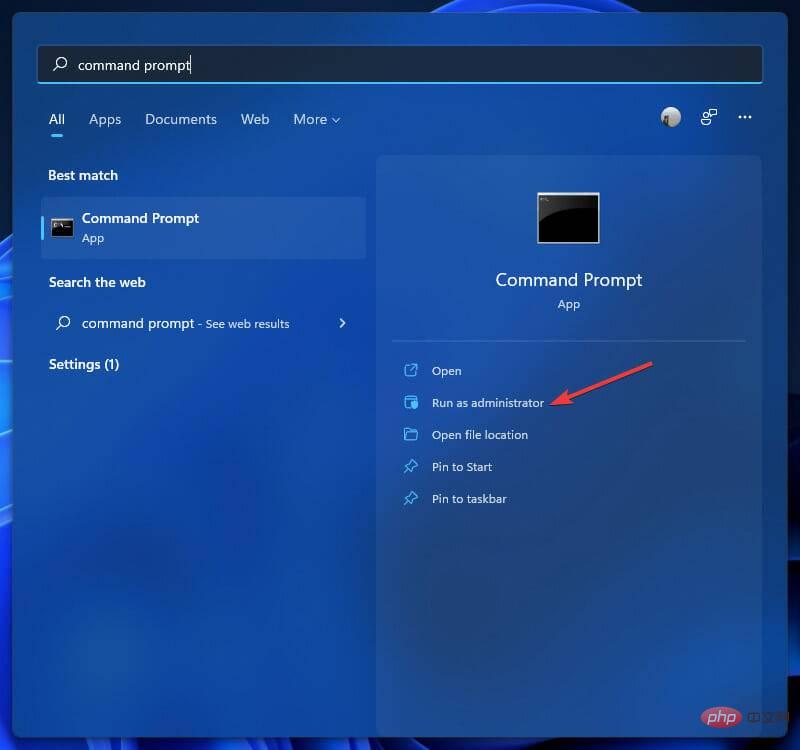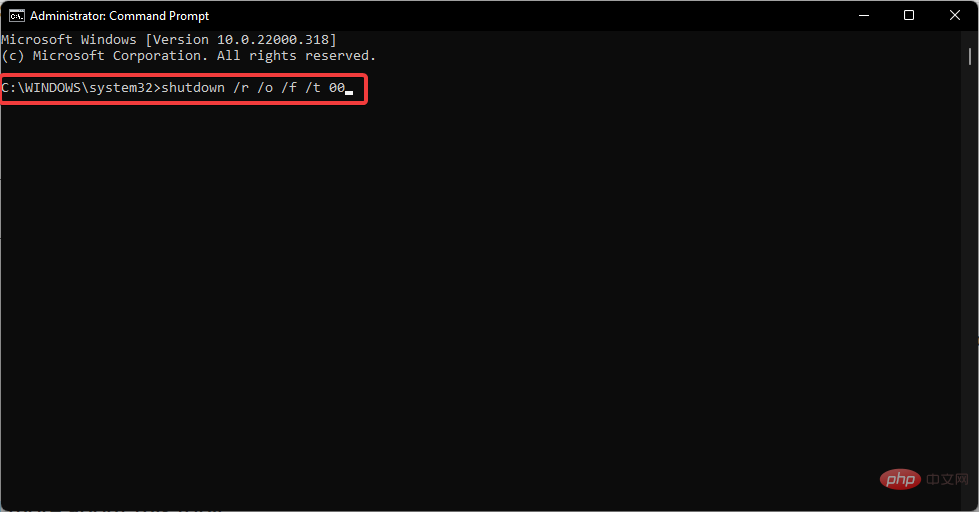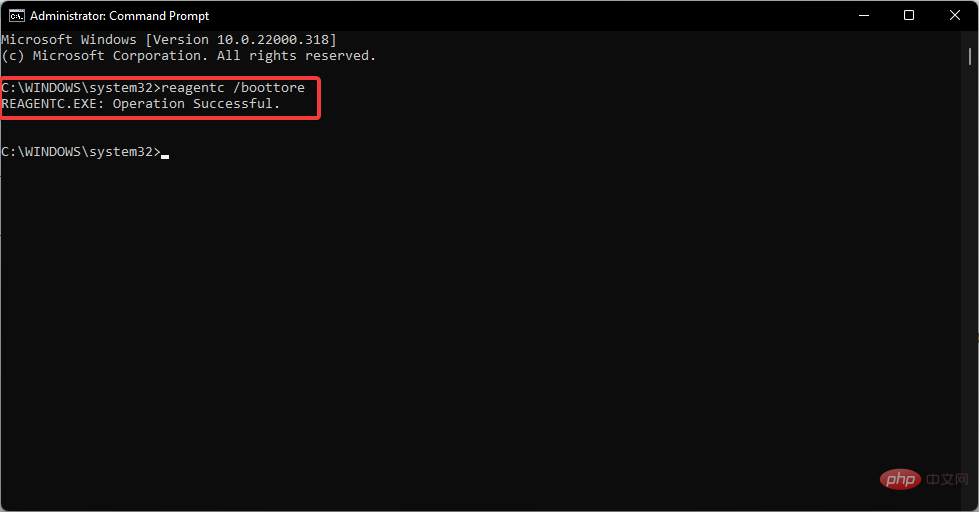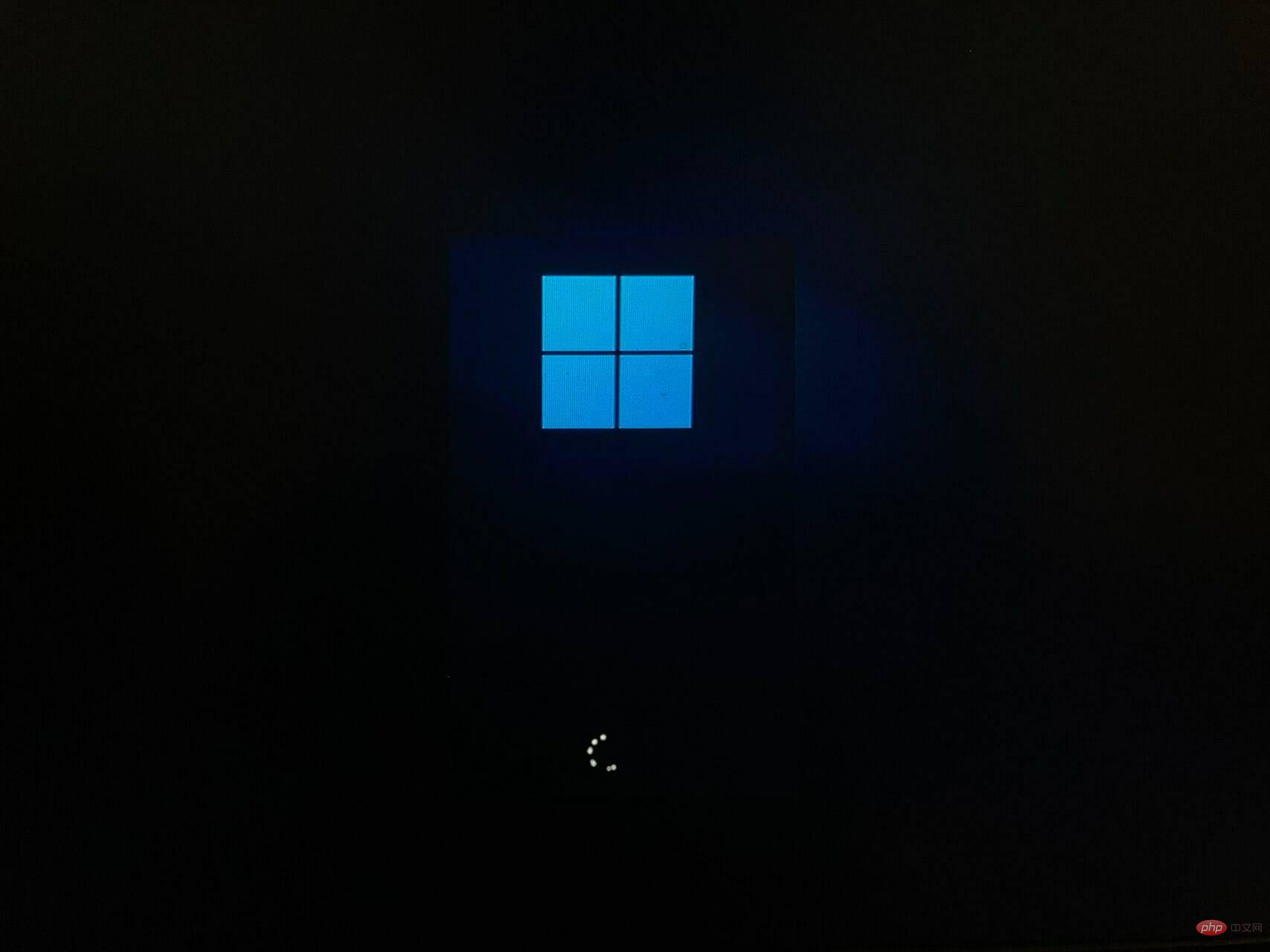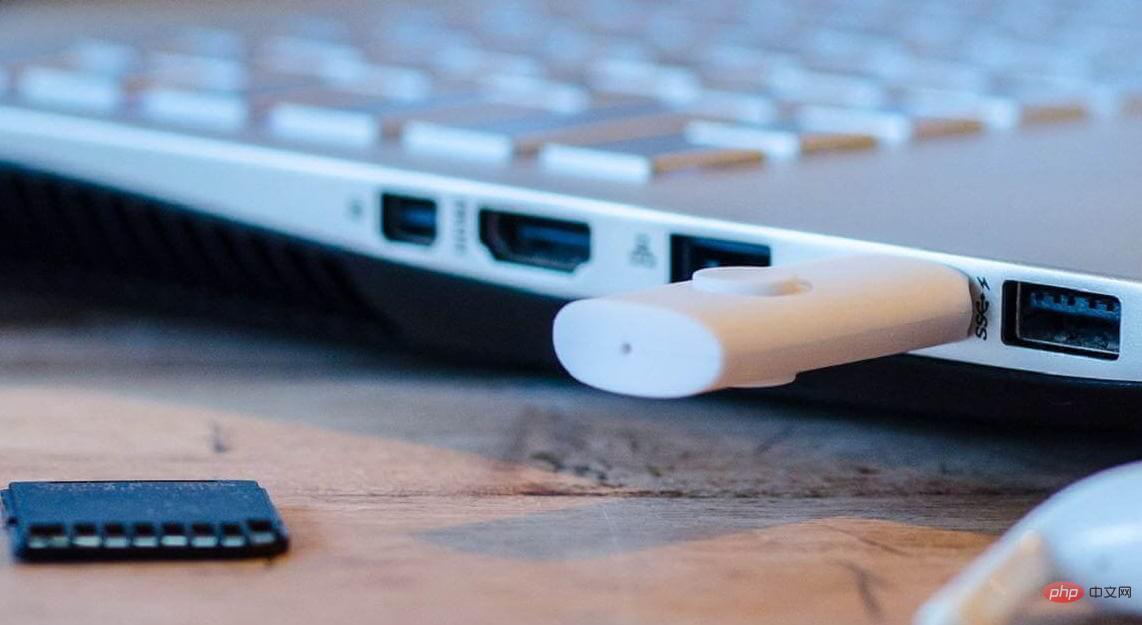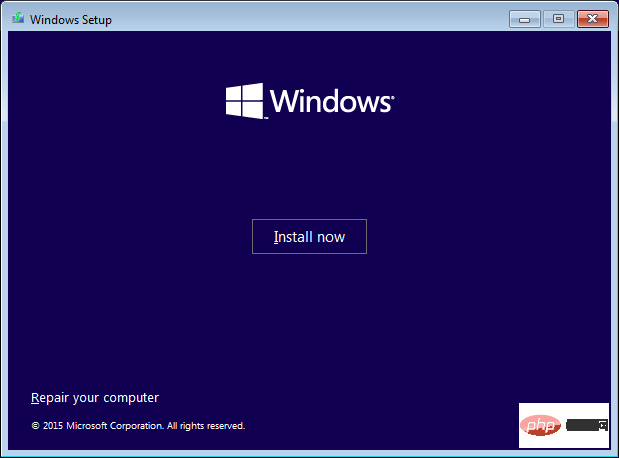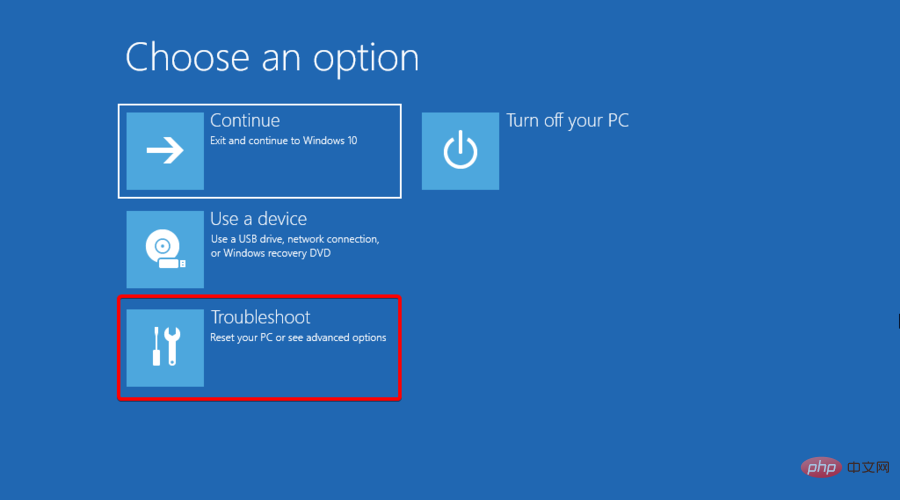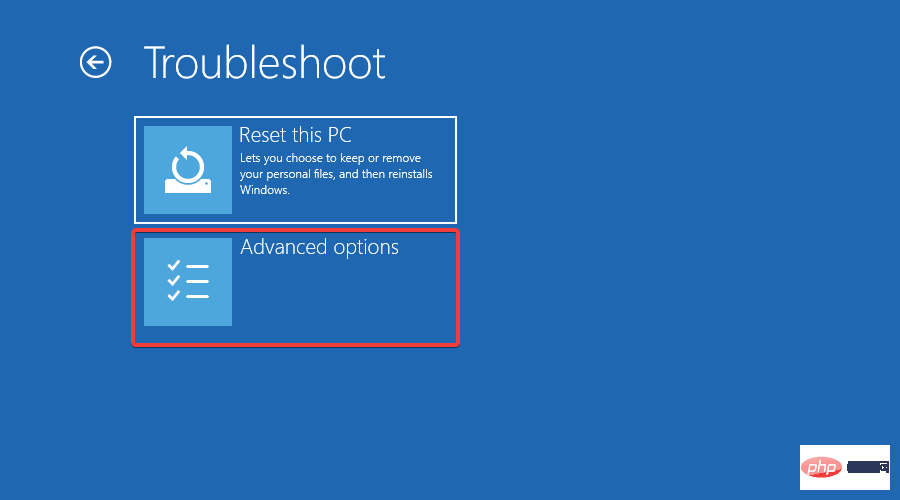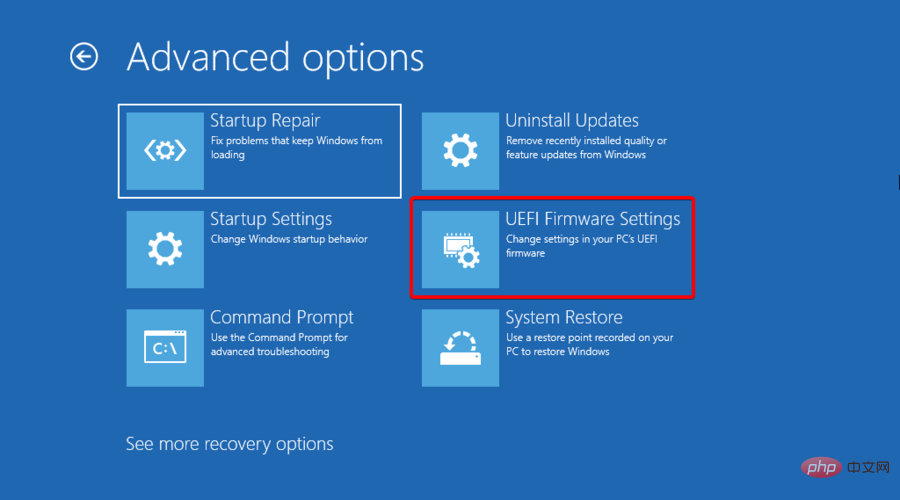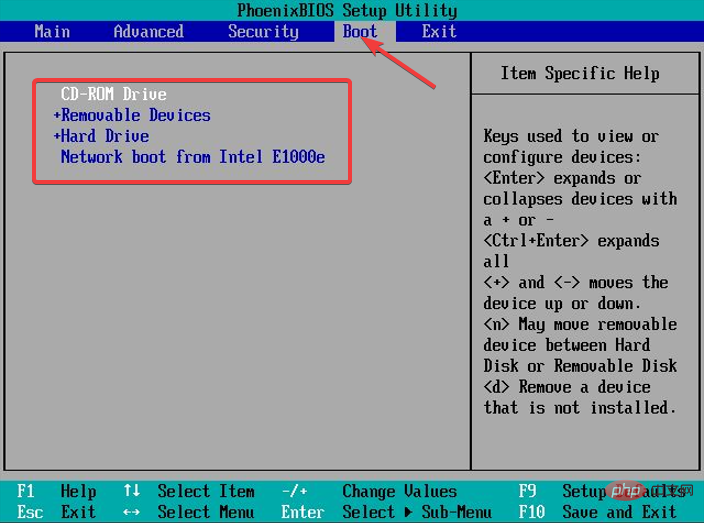Where are the boot options in Windows 11? New User Tutorial
Boot Options is a safe area in Windows 11 systems that can help you recover from most software problems.
You can back up your files, boot into Safe Mode, uninstall errant updates and restore your Windows 11 system to a previous safe point.
In this article, we will show you where to find startup options in Windows 11 if you are a new user. It will help you navigate the settings easily and save the system in case of any mishap.
How boot options help you in Windows 11?
Recovery mode or troubleshooting mode in Windows gives you access to all options to restore or repair your Windows, startup options, and more.
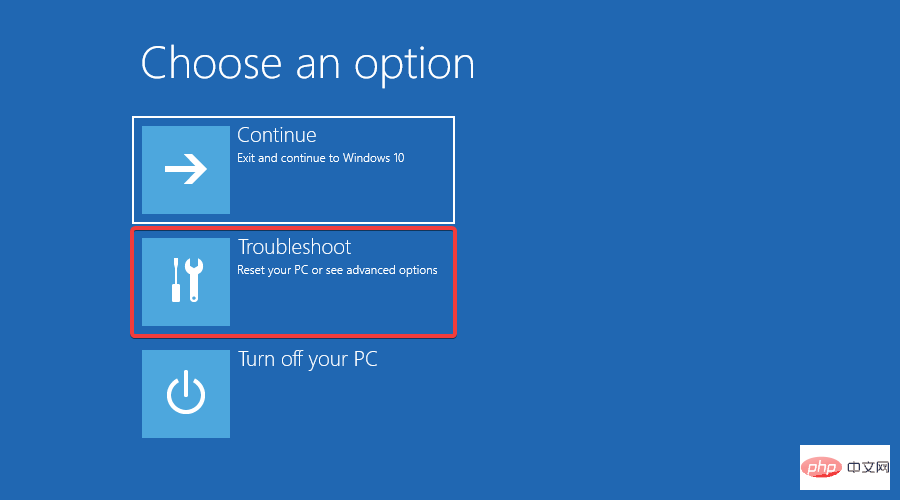
As you can see from our screenshots, this mode helps you Troubleshoot the system or reset the PC to factory settings.
Actually, the recovery mode in Windows 11 is the same as the recovery mode in Windows 10, with the following features:
- Startup Repair - Check any Windows startup Solution to the problem
- Safe Mode Boot- It is very useful when you need to boot the system without loading all startup software and exclude third-party software interference
- System Restore - This feature is useful for restoring the system to a previous restore point
- System Image Recovery - If you have a system backup file, you can choose to use it To restore your system
- Command Prompt - Advanced users can launch Command Prompt for command line troubleshooting
About what these Windows 11 recovery methods are for For more information, check out Microsoft's page on the topic. If all you really want to do is enter it, all you have to do is follow one of the methods below.
How to access startup settings in Windows 11?
1. Using the Windows 11 Settings Menu
- Press and Windowsopen Windows Settings.

- Select System Settings and click Restore Settings.

- Click Restart now in the Advanced startup option.

- Your system will now reboot into boot setup.
2. Using the Windows Start Menu
- Press the Windows key and then click the Power button in the lower right corner.

- Hold down the Shift key and select the Restart option.

- Your system will bypass the traditional reboot and boot to advanced boot options.
3. Use Windows Quick Links.
- Press the Windows keys X together. You will see a pop-up window with various options.

- Move the cursor to the Close or Exit option.
- Hold down the Shift key and click the "Restart" option.

4. Using Command Prompt
- Press the Windows key and type Command Prompt. Click on the Run as administrator option.

- Select Yes in the pop-up window that appears. It will now open the command prompt in administrator mode.
- Type the following command in the window and press Enter.
<strong>shutdown /r /o /f /t 00</strong>
- After executing the command, your system will restart Windows 11 startup settings.
5. Use the reagentc command
- Press the Windows key and search for Command Prompt. Click the Run as administrator option.

- Select Yes in the pop-up window that appears to open the command prompt in administrator mode.
- Type the following command in the window and press Enter.
<strong>reagentc /boottore</strong>
- You will receive a confirmation message informing you that the operation was successful.
- Restart Windows 11 from the power menu and you will enter the startup settings.
6. Hard reset your Windows system
- Hold down the PC’s power button until the system restarts.
- After you see the Windows logo on the screen, press and hold the power button again to restart Windows.

- Repeat these steps until your Windows 11 is in startup settings.
7. Using Bootable Windows 11 Installation Media
- Prepare a bootable USB drive for Windows 11.
- Shut down your PC and insert the USB drive into your PC.

- Turn on your computer and you will see a Windows Settings pop-up window.

- Select the Repair your computer option in the lower left corner. Your system will boot into its advanced setup options.
If your PC does not boot from the USB drive, check out the solutions below to learn how to change the boot order.
How do I change the boot order on my PC?
If you want to boot from another source, such as your USB, DVD, or other drive, simply going into the advanced boot options is not enough, you must access your BIOS.
There is an option in recovery mode and we will explain how to do it here:
- After entering recovery mode using any of the above methods, single Click Troubleshoot.

- Select advanced options.

- Now, click on UEFI Firmware Settings.

- This will take you into your BIOS. Switch to the Boot tab and under Boot Option Priorities and follow the instructions to change the boot priority to another source.

- Next, go to the Exit tab and select Save and Exit , and press Enter.
If you need more information about this process, read our tutorial on how to change the startup order in Windows 11.
However, sometimes this is not enough, and when you exit the BIOS, you will find that the PC still does not boot from the drive you specified.
In this case, we have another article on what to do if Windows 10/11 PC ignores boot order to fix this issue.
That's it. You can now easily find all the settings you need to get your system up and running again.
There are several options in Windows 11 startup settings to fix any issues or restore the system to a working state.
The above is the detailed content of Where are the boot options in Windows 11? New User Tutorial. For more information, please follow other related articles on the PHP Chinese website!

Hot AI Tools

Undresser.AI Undress
AI-powered app for creating realistic nude photos

AI Clothes Remover
Online AI tool for removing clothes from photos.

Undress AI Tool
Undress images for free

Clothoff.io
AI clothes remover

AI Hentai Generator
Generate AI Hentai for free.

Hot Article

Hot Tools

Notepad++7.3.1
Easy-to-use and free code editor

SublimeText3 Chinese version
Chinese version, very easy to use

Zend Studio 13.0.1
Powerful PHP integrated development environment

Dreamweaver CS6
Visual web development tools

SublimeText3 Mac version
God-level code editing software (SublimeText3)

Hot Topics
 1359
1359
 52
52
 How to disable driver signature enforcement in Windows 11
May 20, 2023 pm 02:17 PM
How to disable driver signature enforcement in Windows 11
May 20, 2023 pm 02:17 PM
Microsoft has built several security features into Windows to ensure your PC remains secure. One of them is driver signature enforcement in Windows 11. When this feature is enabled, it ensures that only drivers digitally signed by Microsoft can be installed on the system. This helps most of the users to a great extent as it protects them. But there is a downside to enabling driver signature enforcement. Suppose you find a driver that works for your device, but it is not signed by Microsoft, although it is completely safe. But you won't be able to install it. Therefore, you must know how to disable driver signing in Windows 11
 4 Ways to Enable or Disable Microsoft Store on Windows 11 or 10
May 14, 2023 am 10:46 AM
4 Ways to Enable or Disable Microsoft Store on Windows 11 or 10
May 14, 2023 am 10:46 AM
Here are some possible reasons why you need to disable Microsoft Store: Stop unwanted notifications. Preserves data by limiting the background processes of the Microsoft Store to improve security or privacy Addresses some issues related to the Store or the apps it installs. Restrict children, family members, or other users from downloading applications without permission. Steps to Disable or Enable Windows Store Before following this tutorial, disabling the Microsoft Store will also stop the installation of any apps that require its services. To use the store, users need to enable its service in the same way as blocking it. 1. Block WindowsStore background service Let us from restricting Microsoft Store as
 How to fix Windows 11 activation error 0xc004c060
May 17, 2023 pm 08:47 PM
How to fix Windows 11 activation error 0xc004c060
May 17, 2023 pm 08:47 PM
Why am I encountering Windows 11 activation error 0xc004c060? First make sure you are using genuine Windows and that the license key is valid. Also, check if it was obtained from an official source and if the key is suitable for the installed OS version. If there is an issue with any of these, you may encounter Windows 11 activation error 0xc004c060. So be sure to verify these and if you find everything is in order, move on to the next section. If you obtained the key through unreliable means or believe that the installed copy is a pirated version, you will need to purchase a valid key from Microsoft. In addition to this, misconfigured settings, missing
 How to fix runtime error 339 on Windows 11/10
May 13, 2023 pm 11:22 PM
How to fix runtime error 339 on Windows 11/10
May 13, 2023 pm 11:22 PM
There can be several reasons why runtime error 339 occurs when running a program. Some of them may be that some ocx or dll files are missing, damaged or the dll or ocx is not registered. This would be an annoying experience for the smooth execution of the application. Here are some of the possible error messages you may see for Runtime Error 339 Error – Runtime Error 339: Component DUZOCX32.OCX is not registered correctly or the file is missing. Error – Runtime Error 339. Component MSMASK32.ocx or one of its dependencies is not registered correctly; the file is missing or invalid. Error – Runtime Error '339': Component 'FM20.DLL' or one of its dependencies was not correctly noted
 0x80010105: How to fix this Windows update error
May 17, 2023 pm 05:44 PM
0x80010105: How to fix this Windows update error
May 17, 2023 pm 05:44 PM
Microsoft regularly releases Windows updates to improve functionality or increase the security of the operating system. You can ignore some of these updates, but it's important to always install security updates. While installing these updates, you may encounter error code; 0x80010105. An unstable connection usually causes most update errors, and once the connection is reestablished you're good to go. However, some require more technical troubleshooting, such as the 0x80010105 error, which is what we will see in this article. What causes WindowsUpdate error 0x80010105? This error may occur if your computer has not been updated in a while. Some users may have permanently disabled W for their reasons
 5 Ways to Disable Delivery Optimization Service in Windows
May 17, 2023 am 09:31 AM
5 Ways to Disable Delivery Optimization Service in Windows
May 17, 2023 am 09:31 AM
There are many reasons why you might want to disable the Delivery Optimization service on your Windows computer. However, our readers complained about not knowing the correct steps to follow. This guide discusses how to disable the Delivery Optimization service in a few steps. To learn more about services, you may want to check out our How to open services.msc guide for more information. What does Delivery Optimization Service do? Delivery Optimization Service is an HTTP downloader with cloud hosting solution. It allows Windows devices to download Windows updates, upgrades, applications and other large package files from alternative sources. Additionally, it helps reduce bandwidth consumption by allowing multiple devices in a deployment to download these packages. In addition, Windo
 How to disable display scaling for high DPI settings in Windows 11 or 10
May 22, 2023 pm 10:11 PM
How to disable display scaling for high DPI settings in Windows 11 or 10
May 22, 2023 pm 10:11 PM
The default display scaling feature on Windows 10 or later is a core component of the Windows operating system. But sometimes, this feature of certain apps can cause compatibility issues, unreadable text, blurry logos, and ultimately, app crashes. This can be a huge headache if you're dealing with 2160p or higher resolutions. There are many ways to disable the default display scaling feature on high DPI settings. We've selected the best ones and detailed step-by-step instructions for each process. How to Disable Display Scaling on High DPI Settings There is a way, all you have to do is disable high DPI scaling for a single application, and there is a way to do it for the entire Window
 How to disable core parking on Windows 10
May 16, 2023 pm 01:07 PM
How to disable core parking on Windows 10
May 16, 2023 pm 01:07 PM
If you are a Windows user and want to disable the core parking functionality in your system, this article will guide you through the process. What is core parking? The core parking function is a power saving mechanism. It puts some of your processors into a sleep mode that doesn't perform any tasks and consumes very little or no power. This helps reduce energy consumption and therefore heat in the system. These cores are unparked when needed. Few users need to disable this feature, especially gamers. Disabling this feature will improve your system performance. Disable Windows Core Parking using Windows Registry Editor Step 1: Use Windows + R keys simultaneously to open the run prompt. Step 2: At the run prompt



